Garmin Fenix 8 Review: Superb, but costly
We may earn a commission if you make a purchase from the links on this page.

Garmin has a new flagship watch for 2024: the Garmin Fenix 8.
It comes in three sizes – a small, 43mm one, a medium 47mm version, and a large, 51mm model – so no matter what is the size of your wrist, you will be able to have a watch that fits it well.
All three watches come with gorgeous OLED screens, and have way more battery life than extreme smartwatches like the Apple Watch Ultra and Galaxy Watch Ultra.
So what is new on the Fenix 8 in terms of features?
The design is more refined, you have new buttons, the latest Elevate Gen5 sensor for improved accuracy, as well as useful features like a flashlight on all models, including even the smallest one. You still have Garmin's proprietary OS on board, so there is no option to use third-party apps, but what is new is support for voice commands. Also, you can now take calls on your watch too with the built-in mic and speaker.
Unfortunately, all of that comes with significantly higher prices, which are honestly a bit hard to justify when you compare these new watches to the Fenix 7 series or the Epix Pro.
Garmin Fenix 8 Sizes: Differences explained
| Fenix 8 43mm | Fenix 8 47mm | Fenix 8 51mm |
|---|---|---|
| Screen size 1.3-inch AMOLED | Screen size 1.4-inch AMOLED (no solar) 1.3-inch MIP (solar) | Screen size 1.4-inch AMOLED (no solar) 1.4-inch MIP (solar) |
| Dimensions 43 x 13.8mm | Dimensions 47 x 13.8mm (AMOLED) 47 x 15.2mm (solar) | Dimensions 51 x 14.7mm (AMOLED) 51 x 15.4mm (solar) |
| Weight 72g (50g only case) | Weight 73g (52g only case) for AMOLED 80g (57g only case) for MIP/solar | Weight 92g (64g only case) for AMOLED 95g (67g only case) for MIP/solar |
| Battery Life 4 days (Always-on) 10 days (No always-on) 14 days (Battery saver) 18 hours (All Sat systems) | Battery Life 7 days (Always-on) 16 days (No always-on) 23 days (Battery saver) 30 hours (All Sat systems) | Battery Life 13 days (Always-on) 29 days (No always-on) 41 days (Battery saver) 54 hours (All Sat systems) |
| Solar Not supported | Solar Supported | Solar Supported |
| Prices $1,000 for glass $1,100 for sapphire | Prices $1,000 for glass $1,100 for sapphire | Prices $1,100 for glass $1,200 for sapphire |
Also check out:
Design, Straps and Feel
Premium feel and you get a built-in flashlight
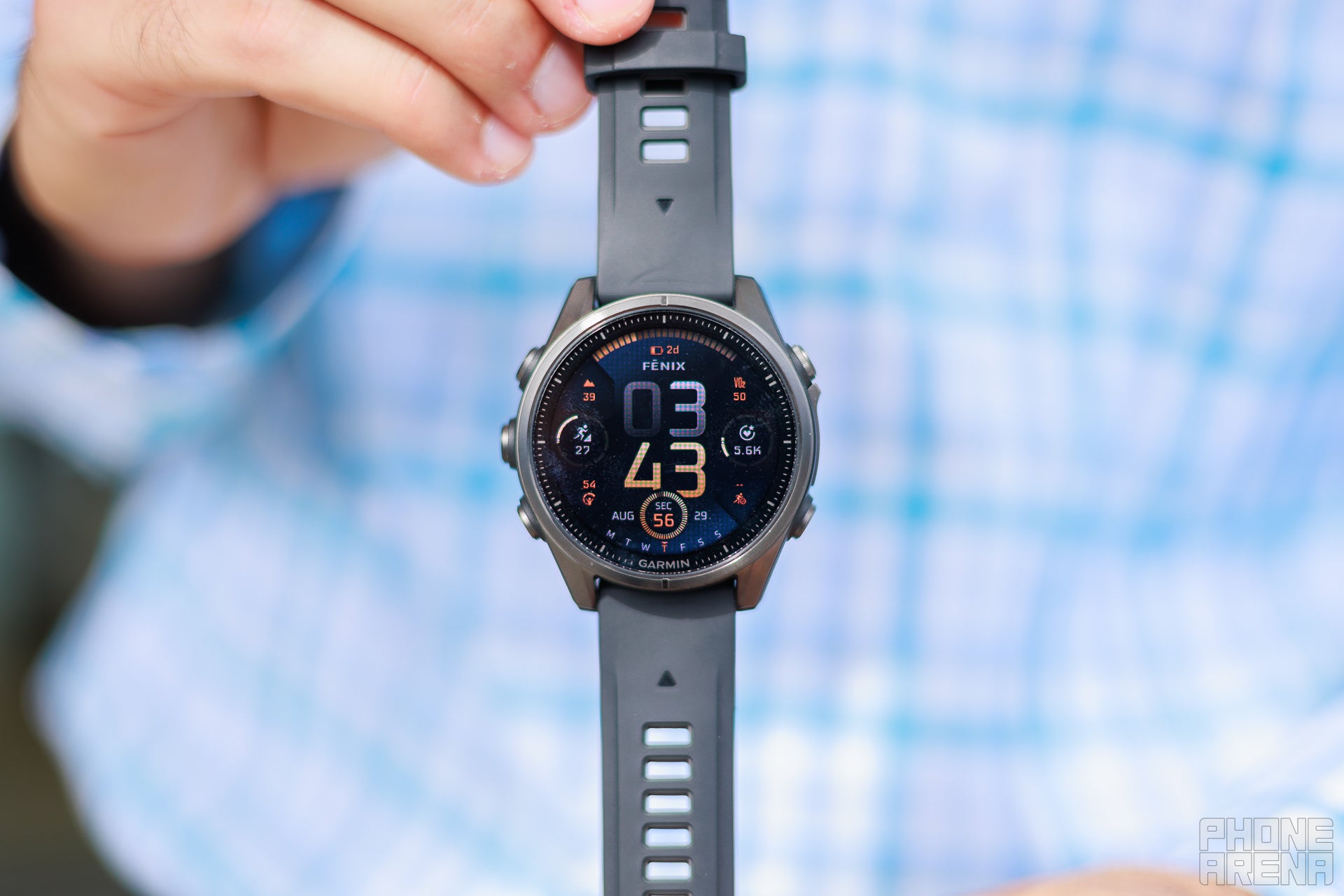
The 43mm Fenix 8 is a great size for those with smaller wrists (Image by PhoneArena)
The Fenix 8 has a round body with a metal bezel and it feels sturdy and very well put together.
You have five physical buttons and a touchscreen, and you can use both the buttons as well as taps and swipes to navigate around the menu. This is very convenient compared to just having a touchscreen for navigation, especially for workouts.
Additionally, you can set a custom shortcut for long-pressing each of those buttons, so you can access your favorite features easily.
Speaking of the buttons, these are new "leakproof" buttons. These are different from your typical physical keys, which basically depress into a hole in the body of the watch. There is no hole here, instead Garmin uses induction to detect a press. In reality, these do feel a bit different than usual, more springy. You get used to that quickly, but it's a slightly different feel than a regular button.
We have used many cheaper Garmin watches like the Venu 3, Forerunner 265, Forerunner 165, Vivoactive 5, and all of them feel plasticky and have more of a sporty vibe. Stylish is not the word that comes to mind for those watches, but the Fenix 8 does look stylish. It's just a bit sad that you have to spend $1,000 to get a stylish watch from Garmin.
On the right side you can see a little strip of metal between the two buttons, which is there to protect the speaker and barometer from damage.
The Fenix 8 wears comfortably, but because of those more premium materials it is a tiny bit heavier than your typical plastic Garmin watch. Choose your size carefully. The bigger watches are tempting with their longer battery life, but might be uncomfortable if you have a smaller wrist. We particularly appreciate having the smaller, 43mm version, which sits great on wrists sized 170mm or less.
Having a smaller size is one important advantage for the Fenix 8 over the Apple Watch Ultra and Galaxy Watch Ultra, which are only available in one large size.
You can use your standard spring bar straps on the Fenix 8 series (and most other Garming watches). The band that comes in the box is made of silicone and is definitely sporty, but it's a nice and a comfortable fit. Still, our experience is that for most people a fabric nylon band is the best and most universal fit (of course, that is personal preference).
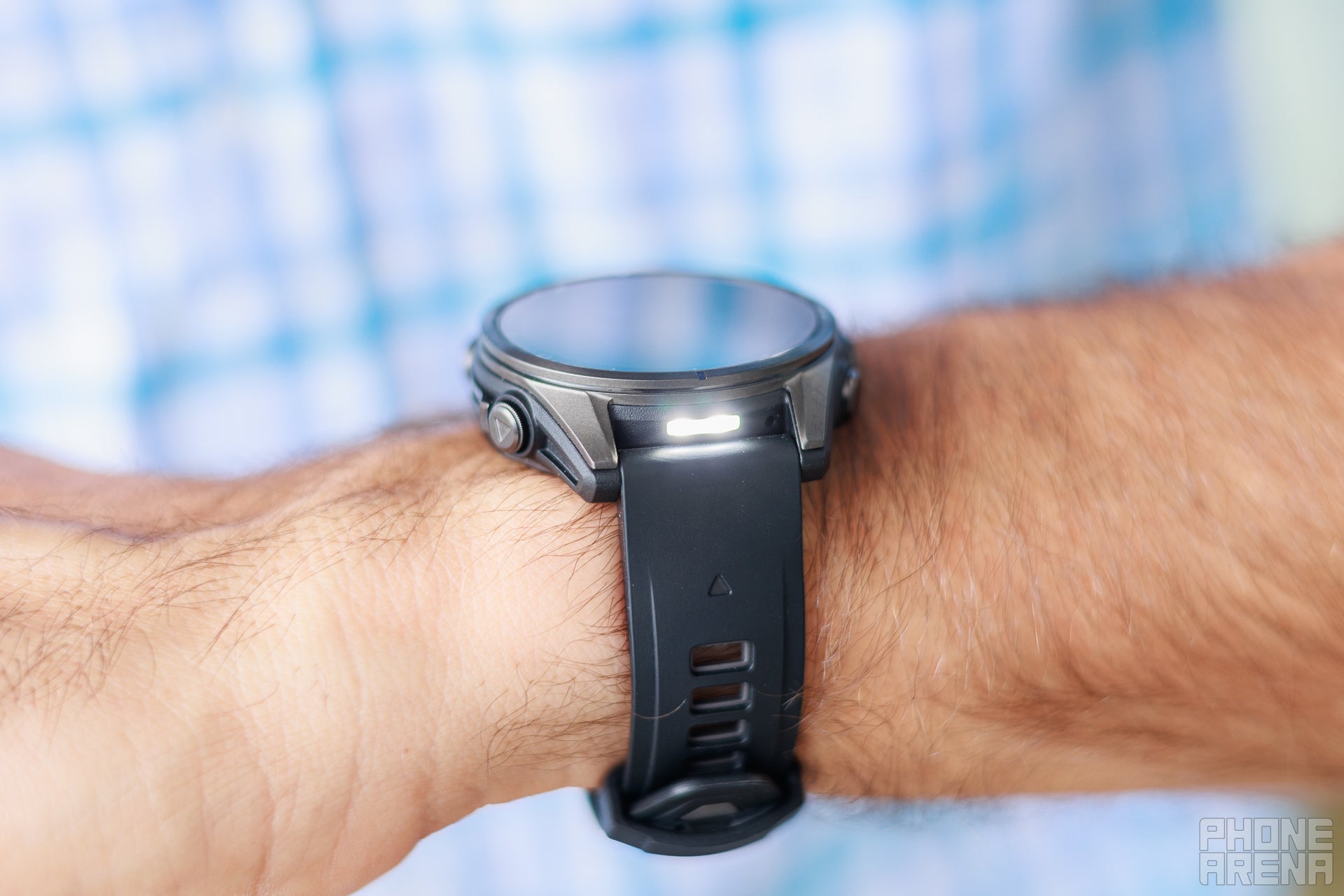
A flashlight is a cool extra (Image by PhoneArena)
Finally, we should mention the built-in flashlight. This is a super underrated feature, in our opinion, and it's great having it on board. It works just as you would expect and you have the option to tweak the intensity with various levels.
Voice Commands
One of the most useful new features in the Fenix 8 in our experience is the support for voice commands.
The reason for that is the convoluted Garmin menu system, where finding the right setting might be a pain if you are new to the platform.
Good news is that it works mostly as you would expect, and it's reasonably fast.
There are two things, however, we wish were possible. First one is the ability to automatically start a workout once you have said a voice command. For example, when we say "start a run", we expect the run workout to start (which is what happens on the Apple Watch for example), but here on the Garmin it only opens the run menu, but does not start the workout. Some people might prefer it that way, but for many others this makes the command less useful as you have to press a button to start the workout anyway. We wish this was available as an option.
The second thing is that you cannot just raise your wrist to start talking, like you can on an Apple Watch, but instead you need to long press the top right button.
On the plus side, many commands such as those for starting a workout, a timer or setting an alarm work even without a phone connection, which is great.
Voice Calls
You can now take a voice call directly on your watch with the Garmin Fenix 8, which sounds great. There is still no LTE cellular modem available here, so you need to have your phone nearby.
Unfortunately, there are a few big issues with this functionality.
The biggest one is just how quiet the speaker sounds, even at maximum volume. I could barely here my callers in a quiet room, and imagine if I had to take a call on the street. It just wouldn't work.
On the other end of the line, callers reported a few of my words were missing or get trimmed halfway, so the quality wasn't perfect.
We really expected Garmin to execute this function much better, as it is right now, we don't imagine many people using it.
Garmin Fenix 8 user interface
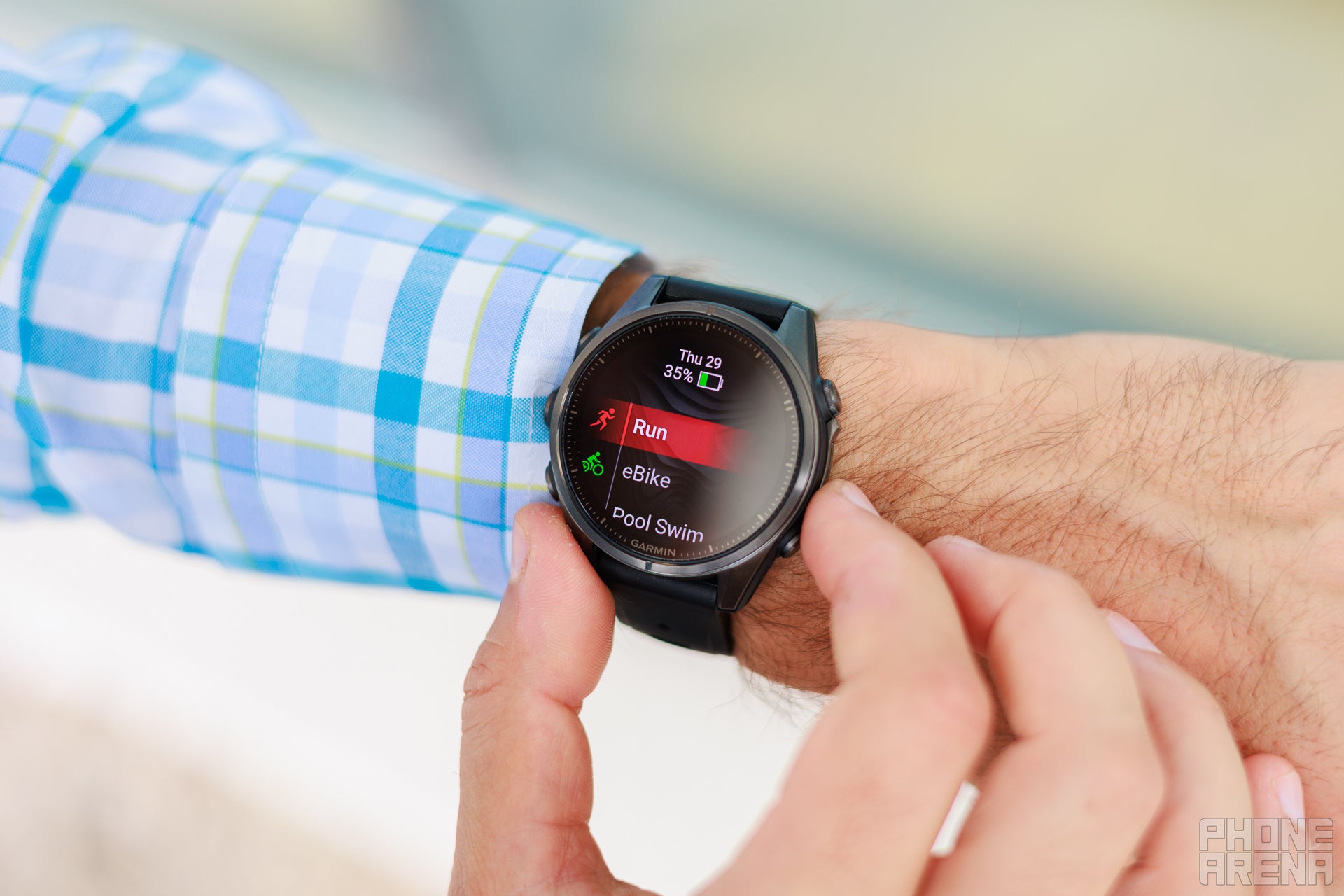
Fenix 8 comes with a reorganized menu that makes a bit more sense
Garmin has made some tweaks to its user interface to make it more approachable, but you can easily tell the operating system here is much more limited compared to Apple's watchOS or Google's Wear OS.
It all starts with the watchfaces. The ones included in the box look good, but there is not much variety.
If you haven't used a Garmin watch before – be warned, you cannot tap on the complications from the watchface. This is a super useful features on other smartwatches.
Sports, Workouts and Health
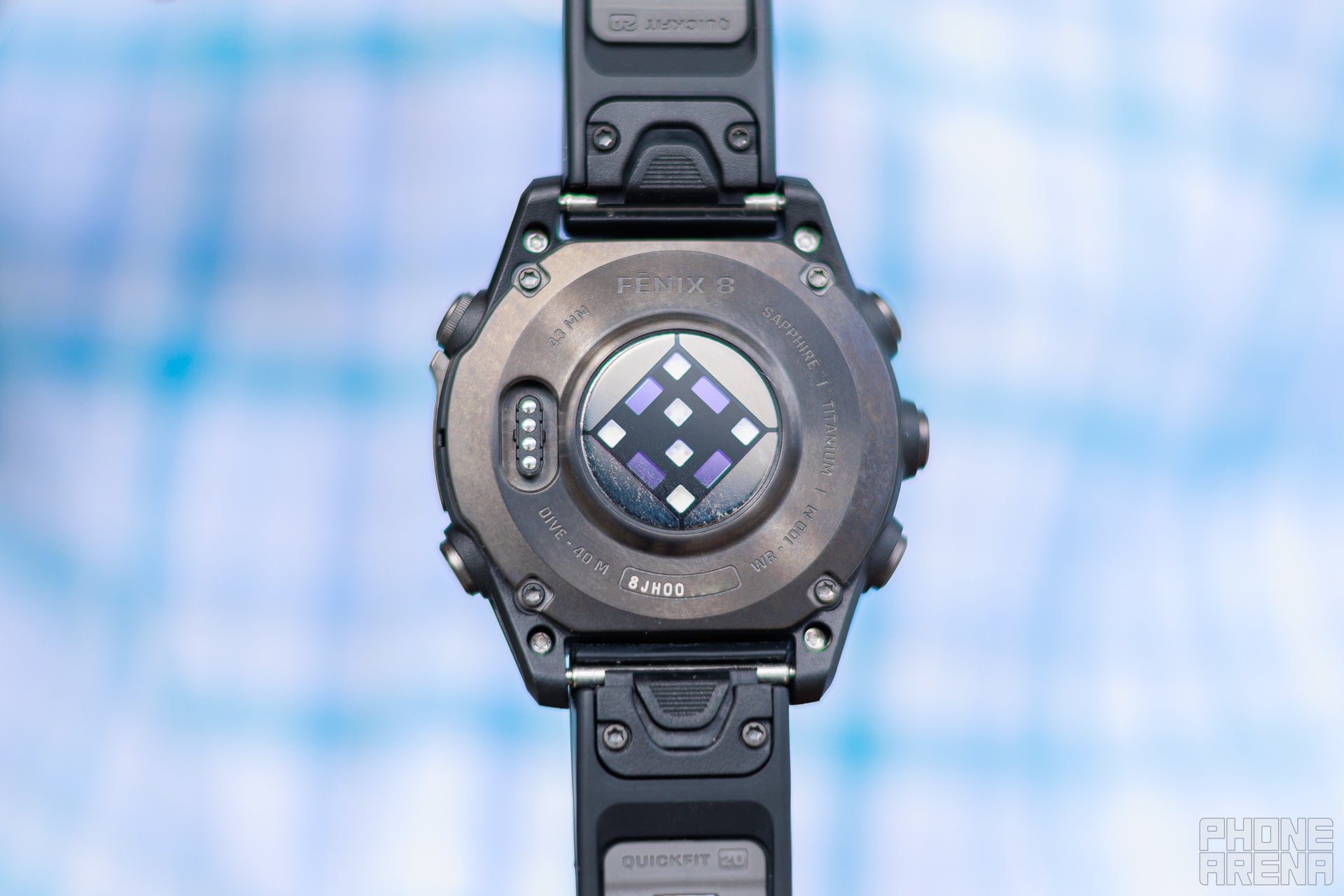
Fenix 8 uses Garmin's new Elevate Gen 5 sensor and it works well (Image by PhoneArena)
As you would expect, the Fenix 8 comes with Garmin's newest Elevate Gen5 sensor, which promises better accuracy. This is also one reason to consider the Fenix 8 over the cheaper Forerunner 265/965 series, which use the older Gen4 sensor.
Testing it with a few runs, the Fenix 8 performed nearly perfect, just as you would expect.
Fenix 8 for Running
It acquired GPS signal quickly, the tracking was excellent, and heart rate accuracy was also very good.
In comparison, the Galaxy Watch Ultra that I was wearing on my other hand was not able to acquire a GPS signal for a long while, and my 10K run ended up being recorded as 9.29K on the Galaxy Watch, a big difference and naturally all my running stats were wrong because of that. The Apple Watch Ultra performed much better in that regard and the accuracy between Apple and Garmin was quite close.
This watch, of course, supports dozens of different workouts and is a perfect companion for multi-sport athletes and triathletes.
Fenix 8 for diving
Those, however, are not new features. The big new feature is dive support, with the new sealed buttons and depth gauge. Garmin has a separate brand of dive watches – the Descend series. However, for most dives you no longer need to buy one of those watches.
The Fenix 8 is certified for dives of up to 40 meters deep, which is what the vast majority of divers will be engaging in. For those few professionals that go deeper, the Descend family of watches would still be the one to get.
We only had one diver in the team who is no longer with PhoneArena, so unfortunately we could not test the dive functionality, but let us quickly summarize the specs: you have support for scuba dive, free diving (apnea) and snorkeling. You get typical metrics such as the depth, time, a compass, water temp, and max depth, as well as descend and ascend alerts. Also, you get GPS coordinates for your entry and exit points.
Other Useful Metrics
Body Battery – This metric is available on even cheaper Garmin watches and it basically accounts for your sleep to come up with a starting score in the morning and then it gradually depletes based on your exertion throughout the day. It's a useful metric to quickly check to see if you have any doubts about doing a heavier training session in the evening.
Training Readiness – This metric is only available on higher end sports oriented Garmin watches (you don't get it on the Venu 3). While Body Battery is a general score for your energy, this one is specifically tailored for your training. It takes into account your sleep, recovery, and previous training history to come up with a number, and the higher it is, the more ready you are to take on bigger challenges.
Training Status – Overview of your training for a longer period of time and your current status.
Training Load – This is a great metric to see if you are stepping into overtraining territory. Here you will find useful insights about your training. For example, I like running longer distances slower, but this slows down my progress and the Fenix 8 rightly recommends me that I start doing high aerobic activities like fast runs.
Endurance Score – Here you can see how your workout help you improve your overall endurance.
Fitness Age – This fun metric uses your weight, health data and training to estimate your "fitness age". The younger, the better.
Battery Life and Charging
We found the battery numbers provided by Garmin correspond with real-life use.
Let us once again quote them here:
- Fenix 8 43mm: 4 days with Always-on / 10 days without
- Fenix 8 47mm: 7 days with Always-on / 16 days without
- Fenix 8 51mm: 13 days with Always-on / 29 days without
The solar versions with MIP displays are getting much higher numbers than that too.
And this is clearly the big advantage of the Garmin over smartwatches from Apple and Samsung. You buy a watch and you have to charge it so rarely that it's no longer a daily chore.
As for charging, it happens via the good old proprietary Garmin pin cable. This may be a tad less convenient than magnetic charger, but it's super reliable and it takes just around an hour to fully charge the watch.
Should you buy the Garmin Fenix 8?
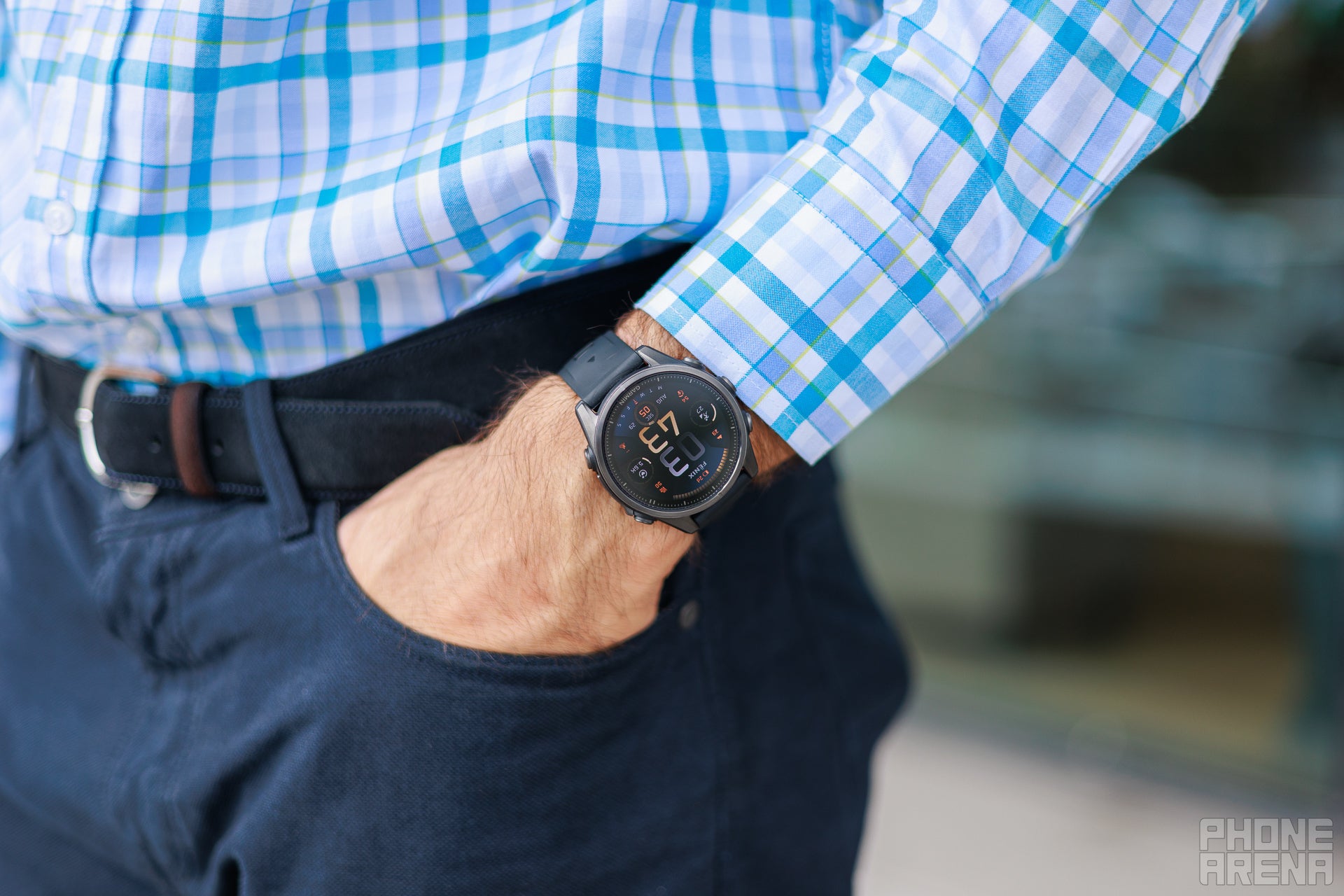
The $1,000+ price will make you question your purchase (Image by PhoneArena)
The Fenix 8 is without a doubt the most premium Garmin watch out there, but its high price will make many potential buyers think twice. And we can certainly understand why.
Most people would indeed be served equally as well by either the Forerunner 265 (comes in two sizes and supports metrics like Training Readiness and triathlons) or the Forerunner 965 (all that the 265 offers plus maps). The Forerunner 265 costs $450, but is often discounted to $350, and the Forerunner 965 starting price is $600, but deals usually bring down its price to around $500.
We are also puzzled by the lack of cellular connectivity on the Fenix 8, which would be a very useful feature.
Those who want a smarter "Ultra" watch and can deal with the two-day battery life would be much better served by the Apple Watch Ultra and Galaxy Watch Ultra series. Both those have a real smart operating system, support for apps, and a much more intuitive interface, plus the cost is significantly lower than the Garmin.
Still, the Fenix 8 is an incredibly capable and well-refined watch. It doesn't have a weird look like those watches by Apple and Samsung. It's an easy recommendation for everyone who wants the ultimate Garmin watch. Just make sure to wait for a good deal, so you don't have to spend $1,000 or more on it.
However, if you are an athlete who wants all the data or if you are just someone who values a premium build quality and reliability, the Fenix 8 will not disappoint you. Just make sure you shop when deals are available to get a better price.
Follow us on Google News

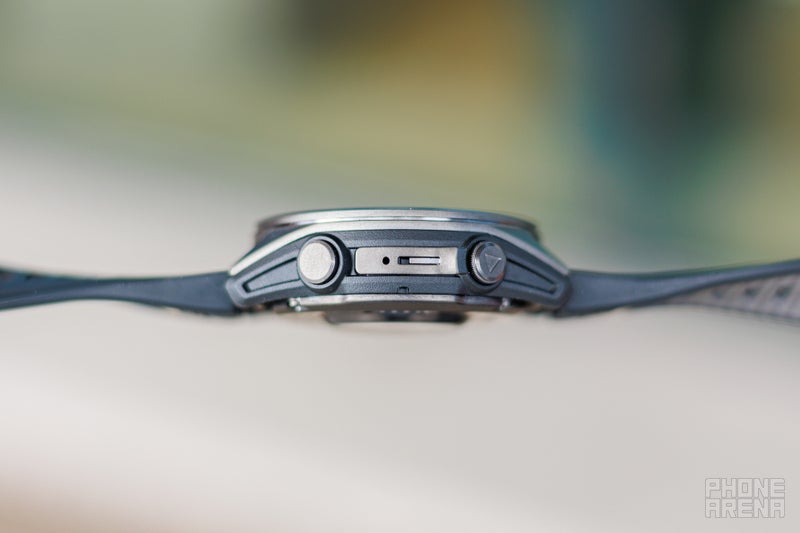
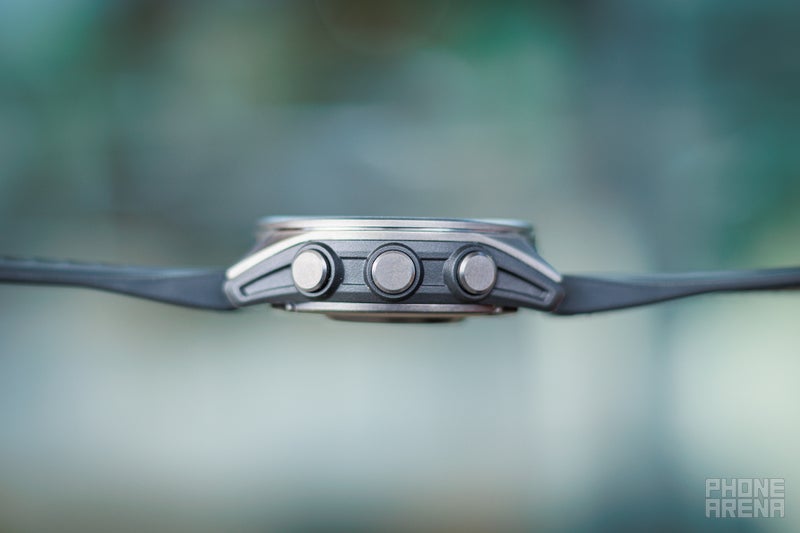

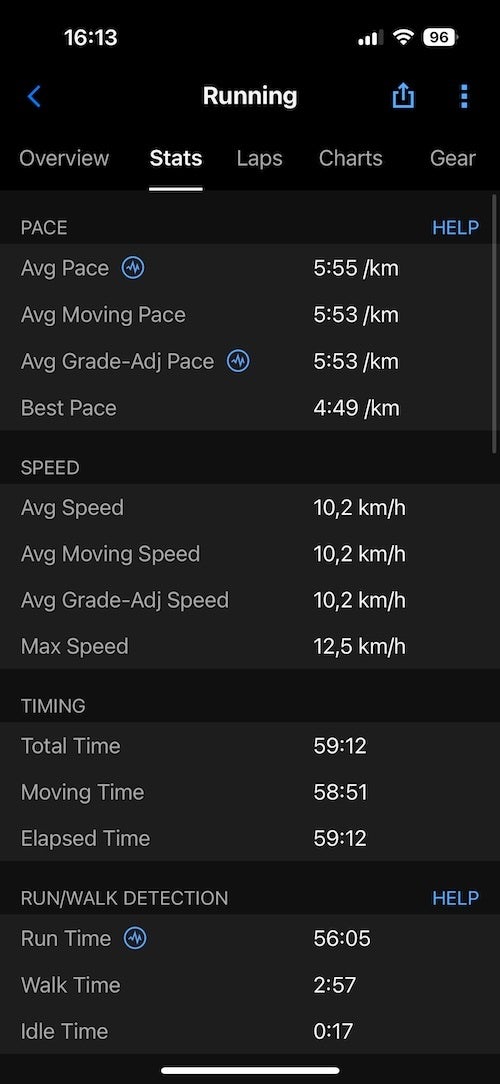
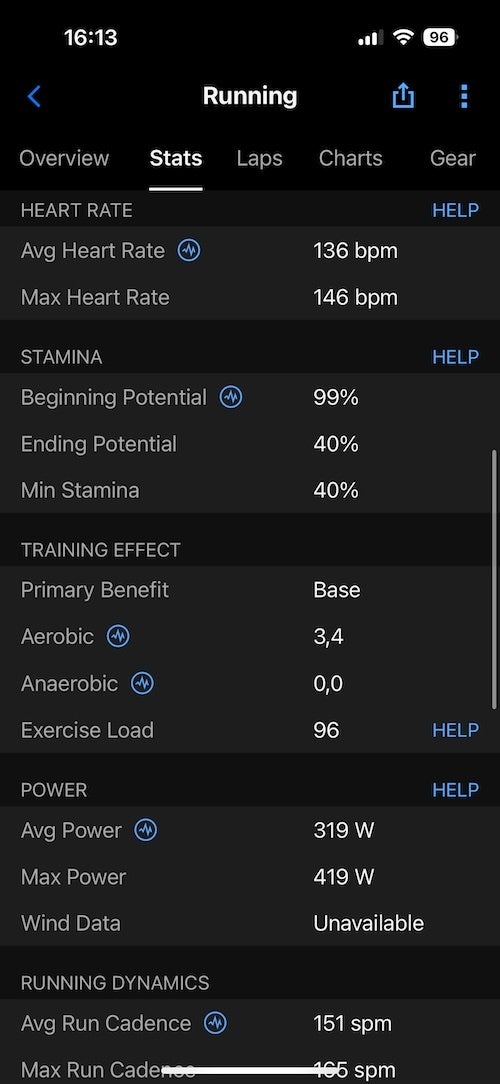




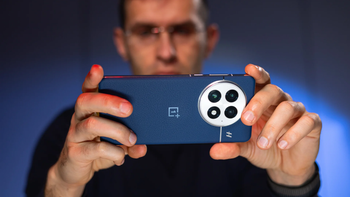

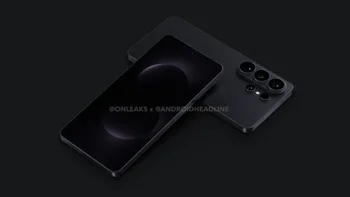






Things that are NOT allowed:
To help keep our community safe and free from spam, we apply temporary limits to newly created accounts: